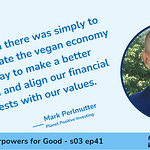
September 4, 2014 - Read the full Forbes article and watch the interview here: http://onforb.es/1lIBAcz. Subscribe to this podcast on iTunes by clicking here: http://bit.ly/ymotwitunes or on Stitcher by clicking here: http://bit.ly/ymotwstitcher. One of the backbones of American philanthropy is the community foundation, which plays a variety of critical roles in building and protecting a community. These community foundations operate in every state in the nation. Personally, I’ve been receiving an education since I joined the Board of the Community Foundation of Utah as a volunteer. Community foundations may become significant players in the impact investing space in the coming decade. Many gifts to such foundations are in the form of donor advised funds, commonly abbreviated as DAFs. A donor advised fund operates a bit like a family foundation, allowing the grantor to “advise” the sponsor holding the assets about what to do with the money, all of which must ultimately be donated to charity. Commonly, when an investor has a taxable windfall, with careful planning from advisors, assets can be donated to a DAF, allowing the investor to take a tax deduction and avoid tax on the gain on sale, while effectively continuing to influence the ultimate grant-making over a span of subsequent years. Those DAF accounts have traditionally been invested in a variety of financial assets. More and more people in the DAF community are looking at these accounts as a source of impact investment capital to be deployed for social impact as investments while waiting to be donated. One threat to this trend is a proposal from Michigan Congressman Dave Camp, who has proposed a requirement that DAFs distribute all of their assets within five years, preventing any meaningful impact investment. When compared to a foundation’s requirement that 5 percent of assets be distributed each year, the Camp proposal looks rather draconian to some in the community foundation world. DAFs have no distribution requirement today, though the Community Foundation of Utah has reported that about 13 percent of DAF assets are distributed to charities each year, well above the 5 percent level required of foundations.











